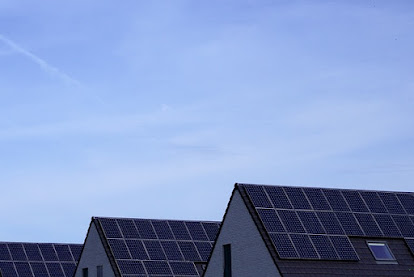Eco
Housing: Building a Sustainable Future
Introduction
As
the world grapples with the urgent demanding situations of weather exchange and
environmental degradation, there is an urgent want for innovative answers to
reduce our carbon footprint and maintain the planet for future generations. One
substantial element of this effort is eco housing, a idea that goes beyond just
refuge to encompass sustainable, strength-green, and environmentally friendly
homes. In this newsletter, we are able to discover the principles and blessings
of eco housing and observe how it contributes to a extra sustainable and
healthier destiny for each individuals and the planet.
Understanding
Eco Housing
Eco
housing, also referred to as green homes or sustainable homes, is a holistic
technique to housing and living that prioritizes environmental obligation,
useful resource performance, and the nicely-being of residents. It targets to
lessen the bad impact of housing at the environment while supplying cushty and
healthy living spaces.
Key
Principles of Eco Housing
Energy
Efficiency: Eco houses are designed to be very efficient,
reducing electricity intake and greenhouse fuel emissions. This is carried out
through efficient installation, strength efficient system, and renewable
electricity sources including sun panels and windmills.
Sustainable
Materials: The constructing materials used in the eco residence
are carefully decided on to minimize environmental effect. Recycled and
sustainable materials, inclusive of reclaimed timber, bamboo, and recycled
steel, are desired over conventional, aid-extensive methods.
Water
Conservation: Eco houses encompass water conservation
capabilities together with low glide furniture, rainwater harvesting systems,
and white-water structures to reduce water use.
Passive
Design: Passive design principles are integrated into the
architecture of eco homes, optimizing natural lighting and ventilation while
minimizing the need for artificial heating and cooling.
Green Spaces: Landscaping and green spaces around eco homes are designed to promote biodiversity and reduce urban heat islands. Native plants and sustainable landscaping practices are often used.
Benefits
of Eco Housing
Reduced
Environmental Impact: Perhaps the most significant benefit of
eco housing is its reduced environmental footprint. These homes consume fewer
resources and produce fewer emissions, contributing to a healthier planet.
Energy
Savings: Eco homes are designed to be energy-efficient,
leading to lower utility bills for homeowners. Over time, these savings can
offset the initial cost of green building technologies.
Improved
Indoor Air Quality: Eco housing often employs non-toxic,
low-VOC (volatile organic compound) materials, leading to better indoor air
quality. This can result in improved health and well-being for occupants.
Enhanced
Comfort: Eco homes are designed to provide comfortable living
environments. Effective insulation, passive heating and cooling, and natural
lighting contribute to a more pleasant and cozy atmosphere.
Increased
Property Value: As eco-friendly capabilities and
sustainability come to be more critical to homebuyers, eco homes generally tend
to have higher property values and might offer a competitive side inside the
actual property market.
Health
Benefits: The use of non-toxic materials and progressed indoor
air great can have a superb impact on the health of occupants, decreasing the
hazard of respiration troubles and allergies.
Examples
of Eco Housing Initiatives
Passive
House Standard: The Passive House Standard is a rigorous
set of strength performance hints for buildings, that specialize in lowering
strength consumption for heating and cooling. Buildings that meet those
requirements devour up to ninety% less power than traditional buildings.
LEED
(Leadership in Energy and Environmental Design):
LEED is a extensively identified green building certification program that
assesses the environmental overall performance of buildings throughout diverse
criteria, inclusive of strength efficiency, water conservation, and substances
selection.
Earthships: Earthships are innovative, off-grid homes made from recycled materials like tires and bottles. They are designed to be entirely self-sufficient, generating their own electricity and capturing rainwater.
Cohousing
Communities: Cohousing communities are designed to
encourage sustainability through shared resources and reduced energy
consumption. They often feature communal gardens, carpooling arrangements, and
shared facilities.
Challenges and Considerations
While
eco housing offers numerous benefits, there are also challenges and
considerations to keep in mind:
Initial
Costs: The upfront prices of eco housing can be higher than
those of conventional houses due to using advanced technology and sustainable
materials. However, those costs can regularly be recouped through energy
financial savings over time.
Availability
of Resources: Access to sustainable materials and
technology may also range via area, making it important to consider local
availability and expenses.
Building
Codes and Regulations: Local building codes and regulations
may not always align with eco housing principles. Advocacy and collaboration
with local authorities may be necessary to implement sustainable practices.
Education
and Awareness: Homeowners and builders may need
education and training to understand and implement eco housing principles
effectively.
Conclusion
Eco
housing represents a crucial step in the direction of a extra sustainable and
environmentally accountable future. By prioritizing strength performance,
sustainable materials, and the properly-being of occupants, these houses now
not most effective reduce the terrible impact at the surroundings but also
offer severa blessings to homeowners. As society increasingly embraces green
dwelling, eco housing will play a huge position in mitigating the effects of
climate exchange and retaining our planet for generations to return. It's time
for us to apprehend the importance of eco housing and actively help its
adoption in our groups.





